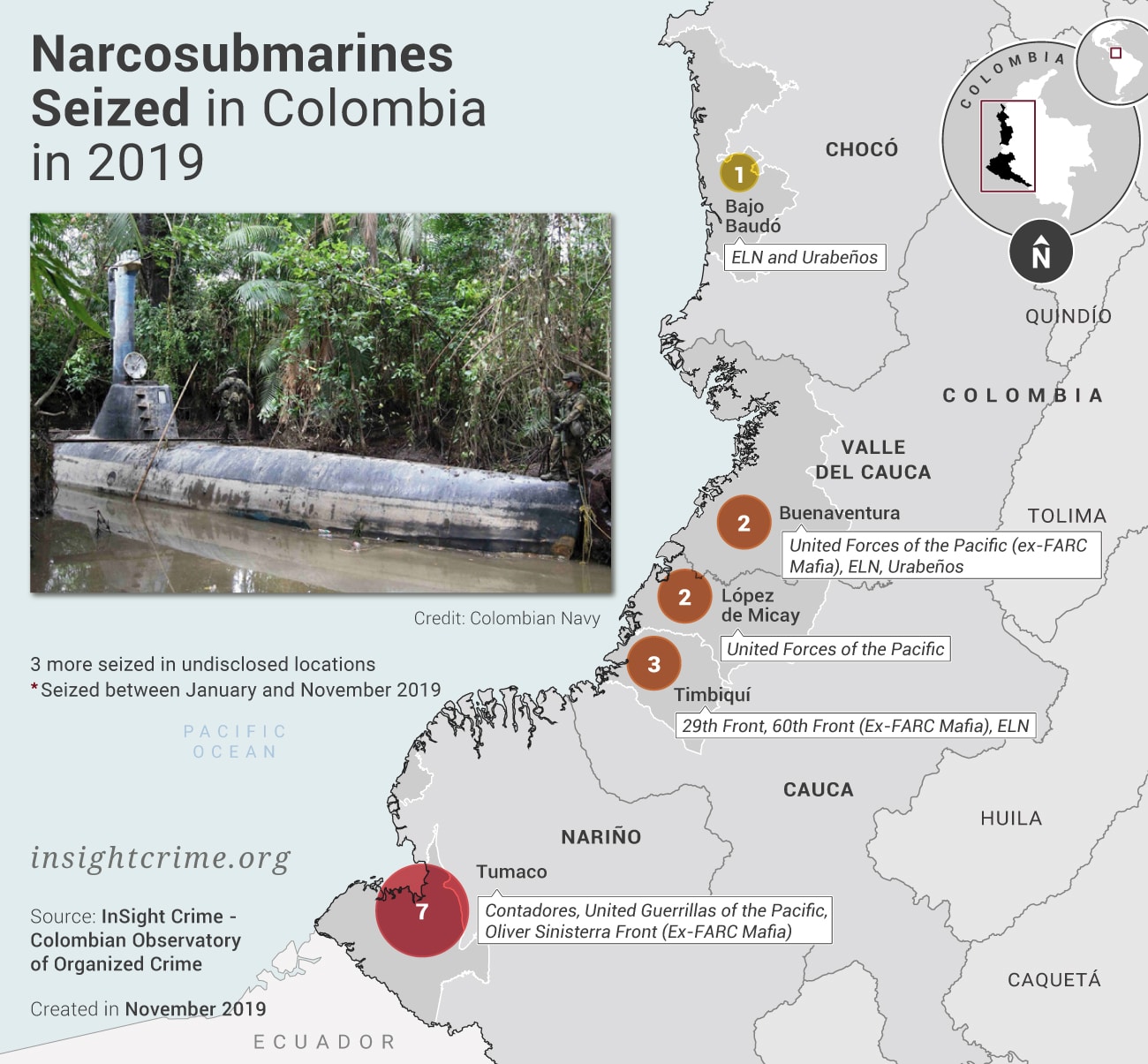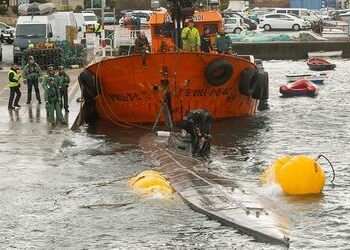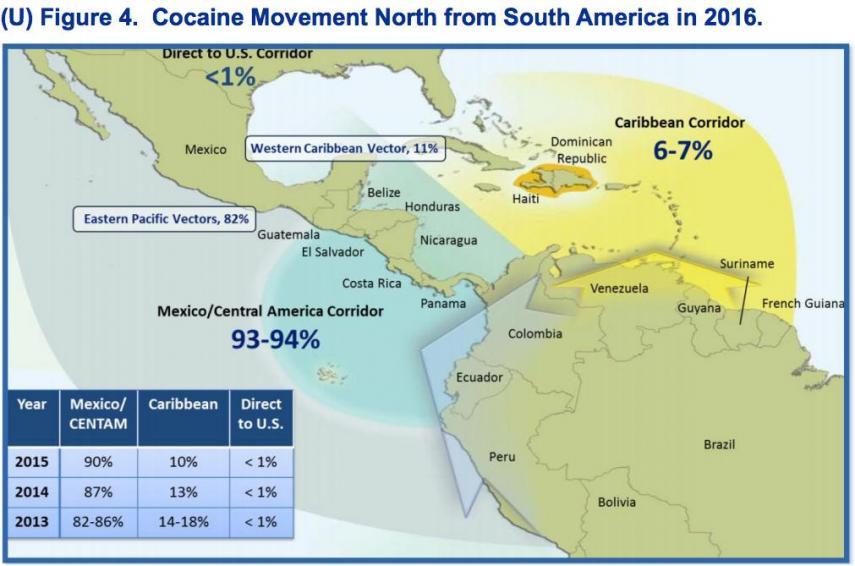The discovery of a narco-submarine in Spain has raised questions about where and how these vessels are being used, since all previous seizures by Colombia and US authorities in 2019 have been in the Pacific Ocean.
On November 24, Spanish authorities seized a 22-meter submarine off the coast of the northern province of Galicia, carrying around three tons of cocaine. Two crew members were reported to be from Ecuador while a third managed to escape.
Official sources within the investigation told El País that the submarine had come from Colombia but had been built in Guyana and had been “operating for years.”
SEE ALSO: ‘Narco-Subs’ Pose Underwater Threat for US, Colombia Authorities
The investigators added that the drug traffickers had targeted a landing in Galicia because Spain has mostly used its maritime resources to patrol its southern coast.
This runs counter to recent trends since all narco-submarines caught in 2019 so far, whether in Colombian or US waters, were found in Pacific waters.
The most spectacular capture came in July when a Coast Guard vessel pulled up alongside a narco-sub out at sea, with a crew member jumping onto its roof and pounding on the hatch until it opened. It contained over 10 tons of drugs with a street value of over $300 million.
While there have been at least three narco-submarines captured by the US this year, InSight Crime has counted at least 19 more such vessels seized in Colombia, all along its Pacific Coast.

InSight Crime Analysis
Prior to the capture of the submarine in Spain, the narrative for the use of these vessels in 2019 seemed quite simple.
With cocaine production at an almost record high in Colombia, drug traffickers both needed and could afford to diversify their modes of transportation, risking hundreds of millions of dollars of drugs on one submarine, boat, plane or shipping container.
Secondly, the use of submarines was almost exclusive to the Pacific drug trafficking highway as the Caribbean route requires traveling longer distances and further out to open sea.
SEE ALSO: Colombia News and Profile
The seizures of narco-submarines in Colombia also showed how their use has become almost standard for drug trafficking groups overseeing shipments overseas. All seizures tracked by InSight Crime this year were found either under construction or in use in remote municipalities such as Tumaco, Timbiquí, Buenaventura and López de Micay.
The largest seizure ever recorded on a submarine in Colombia came in September when a joint US-Colombia operation netted a vessel carrying eight tons of cocaine off the coast of Tumaco, in the southern department of Nariño.
While authorities have not been able to assign specific criminal groups to each captured submarine, the Tumaco vessel was reportedly owned by the Oliver Sinisterra Front, an ex-FARC mafia front particularly active in Nariño and along the border with Ecuador.
This makes the seizure in Spain all the more fascinating. Its size, at 22 meters, is larger than any previously recorded narco-submarine and indicates increased know-how. These have usually measured between 6 and 12 meters although the Tumaco submarine caught in September measured 18.5 meters.
Its range is another potential game changer. Narco-submarines leave little room for comfort, dedicating most of their space to cargo, with fuel tanks stashed at the front and often doubling up as sleeping areas, reported Vice.
This no-frills approach to cross-Atlantic travel has yielded results and it is highly unlikely that this was the first narco-submarine to reach European shores.
According to El País, rumors of these subs making it to European and African shores had “turned into something of a legend among Spanish narcotics officers.”
The legend just became a reality.


